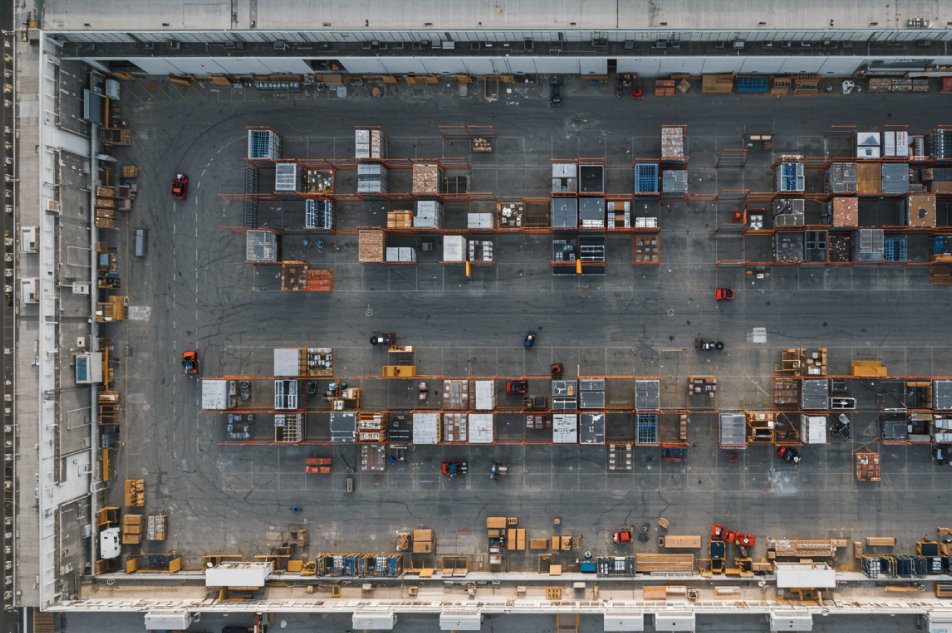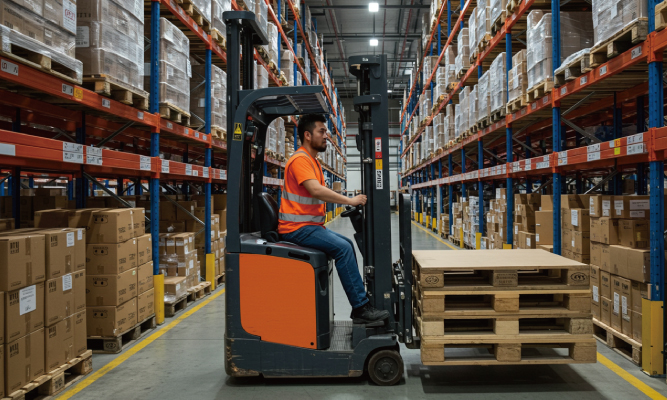Last-Mile Delivery 101: All You Need to Know

Key Takeaways
- Last-mile delivery dictates customer satisfaction and repeat business.
- High costs and operational inefficiencies plague last-mile logistics.
- Retailers leverage distribution centers, automation, and crowd-sourcing to streamline operations.
- Urban congestion and rural distances present unique delivery challenges.
- Future-focused solutions require adaptive, technology-driven strategies.
Understanding Last-Mile Delivery
Last-mile delivery is the critical final phase where a product travels from a distribution center to the customer’s doorstep. This segment involves navigating urban traffic, rural distances, and customer expectations for rapid delivery. It’s also the most expensive and resource-intensive segment, accounting for up to 53% of total shipping costs.
Why Last-Mile Delivery Determines Customer Retention
Retail success hinges on meeting delivery promises. A failed same-day or next-day delivery can prompt customers to abandon a brand altogether. Speed, accuracy, and transparency are non-negotiable.
Consumers value convenience. Having goods delivered directly eliminates the need for in-store pickups, enhancing customer experience. A robust last-mile delivery system turns logistics into a competitive advantage, driving higher order volumes and customer loyalty.
The Last-Mile Problem: A Logistics Bottleneck
- Urban Congestion: Traffic delays extend delivery timelines.
- Sparse Rural Routes: Fewer stops per mile inflate operational costs.
- Real-Time Visibility Gaps: Inaccurate tracking frustrates customers.
Each challenge increases costs, disrupts schedules, and risks customer satisfaction.
Cost Factors Amplifying the Last-Mile Challenge
Free shipping expectations further complicate the economics. Retailers bear rising last-mile expenses, including:
- Fuel and labor costs
- Vehicle maintenance
- Failed first-attempt deliveries
- Reverse logistics for returns
These factors erode profit margins and demand strategic intervention.
Optimizing Last-Mile Delivery: Strategic Solutions
1. Micro-Fulfillment Centers (MFCs)
Locating small-scale distribution hubs closer to high-demand urban areas slashes transit times. MFCs facilitate faster order fulfillment and reduce last-mile distances.
2. Hybrid Delivery Networks
Combining owned delivery fleets with third-party logistics partners enhances flexibility. Retailers maintain control while scaling operations through intermediaries during peak demand.
3. Autonomous Delivery Technologies
Drones, autonomous mobile robots, and delivery bots mitigate labor shortages and streamline repetitive last-mile tasks. These innovations enhance reliability while lowering recurring operational costs.
4. Crowdsourced Delivery Models
By tapping into local, gig-economy drivers, crowdsourcing accelerates order fulfillment. This agile model reduces overhead and meets customer demands for rapid, flexible delivery scheduling.
Types of Last-Mile Delivery Providers
Retail-Owned Fleets
Large retailers develop in-house delivery infrastructure to retain end-to-end control. With physical store networks doubling as dispatch points, retailers expedite order fulfillment while optimizing storage retrieval processes.
Delivery Intermediaries
Third-party delivery platforms collaborate with retailers to offer same-day services. These intermediaries bridge the gap between retailers and customers but charge commissions, impacting overall margins.
Quick Commerce Platforms
Quick commerce caters to hyperlocal deliveries within minutes. Focused on small, frequent orders, these platforms prioritize speed over volume, appealing to urban consumers with immediate needs.
Warehouse Planning: Foundation of Efficient Last-Mile Delivery
1. Strategic Warehouse Location
Proximity to customer clusters reduces delivery times. Establishing warehouses near urban centers and transport hubs enhances responsiveness and lowers last-mile transit costs.
2. Inventory Optimization
Accurate inventory data ensures product availability and prevents overstocking. Advanced inventory systems enable real-time tracking, reducing retrieval times and boosting order accuracy.
3. Order Fulfillment Efficiency
Optimizing order picking, packing, and dispatch workflows minimizes handling times. Automated storage retrieval systems and conveyor integrations accelerate throughput without compromising accuracy.
4. Shuttle Systems for High-Density Storage
Incorporating shuttle systems increases storage density while facilitating rapid product retrieval. Pallet shuttle and miniload shuttle technologies streamline high-volume order fulfillment.
Overcoming Urban and Rural Last-Mile Challenges
Urban Delivery Solutions
- Electric delivery bikes and compact vans navigate congested city streets efficiently.
- Centralized parcel lockers provide convenient pickup points, reducing delivery attempts.
Rural Delivery Innovations
- Consolidated delivery routes reduce costs per delivery stop.
- Strategic partnerships with local couriers enhance coverage and service reliability.
Technology’s Role in Last-Mile Delivery Transformation

Real-Time Tracking and Visibility
Advanced tracking systems offer customers live updates, boosting transparency and satisfaction. Retailers gain actionable insights to optimize delivery routes and anticipate delays.
Route Optimization Software
Dynamic route planning minimizes travel distances and fuel consumption. Algorithms adjust delivery schedules in real-time, accounting for traffic patterns and weather conditions.
Data-Driven Decision Making
Analytics platforms assess delivery performance, identify inefficiencies, and forecast demand surges. These insights guide resource allocation and process improvements.
Crowdsourced Delivery: A Scalable, Cost-Effective Model
Retailers leverage crowdsourcing to scale delivery operations without heavy capital investment. Local drivers using personal vehicles handle last-mile deliveries, offering:
- Faster turnaround times
- Lower operational costs
- Enhanced flexibility during peak seasons
This model aligns with consumer expectations for rapid, convenient service.
Evolving Customer Expectations and Future Trends
- Same-day or next-day delivery as standard
- Real-time order visibility
- Flexible delivery scheduling
- Sustainable delivery options
Meeting these expectations requires continuous innovation, strategic investments, and adaptive logistics models.
Key Metrics for Last-Mile Success
| Metric | Importance |
|---|---|
| Delivery Speed | Directly impacts customer satisfaction |
| First-Attempt Success Rate | Reduces operational costs and boosts efficiency |
| Cost per Delivery | Monitors profitability |
| Customer Satisfaction Scores | Gauges service quality and loyalty |
| On-Time Delivery Rate | Measures reliability and process effectiveness |
Conclusion
Mastering last-mile delivery requires more than fast shipping. It demands an integrated approach combining strategic warehouse planning, advanced technology, flexible delivery models, and customer-centric processes. By addressing both urban and rural challenges, optimizing storage and retrieval operations, and embracing innovation, businesses can transform last-mile logistics into a competitive edge.
Frequently Asked Questions (FAQs)
Q1: Why is last-mile delivery so expensive?
The combination of labor, fuel, vehicle maintenance, and inefficiencies in routing makes last-mile delivery the costliest segment of the logistics chain. Free shipping expectations further squeeze retailer margins.
Q2: How does warehouse planning impact last-mile delivery?
Efficient warehouse planning optimizes storage retrieval, reduces picking times, and ensures inventory availability, directly contributing to faster and more accurate last-mile fulfillment.
Q3: What technologies improve last-mile delivery efficiency?
Key technologies include route optimization software, real-time tracking systems, autonomous delivery vehicles, and crowdsourced delivery platforms.
Q4: How can businesses address last-mile challenges in rural areas?
Businesses can consolidate delivery routes, partner with local couriers, and strategically position micro-fulfillment centers to enhance rural delivery efficiency.
Q5: Is crowdsourced delivery sustainable for large-scale operations?
While ideal for scaling quickly and reducing costs, crowdsourced delivery works best when integrated with owned fleets and third-party partners to manage high order volumes and maintain service quality.
Do you need more information?
Our team of experts will be happy to help you with any questions you may have.
More information